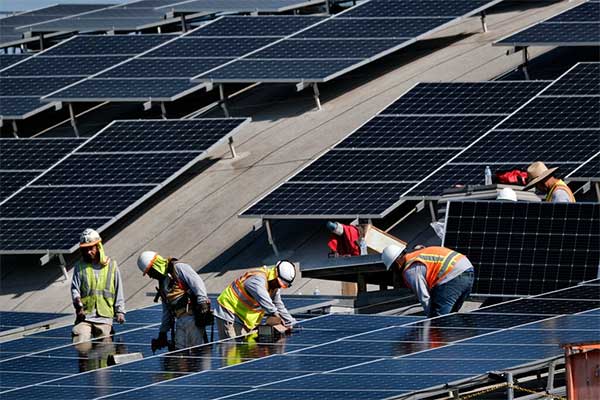The California Energy Commission (CEC) approved the 2022 California Energy Code, which sets the building standards for new construction, according to the California Solar & Storage Association.
In a historic unanimous vote, California became the first state in the country to require builders to install solar and battery storage on new commercial buildings and high-rise multifamily buildings. The approved Energy Code also includes requirements for builders to design single-family homes so battery storage can be easily added to the already existing solar system in the future as well as incentives to eliminate natural gas from new buildings.
This decision intensifies the spotlight on the California Public Utilities Commission (CPUC), which holds the keys to whether these standards ever go into effect.
Solar PV and energy storage, whether on homes or commercial properties, is directly dependent on net metering which sets the credit commercial and residential solar customers receive for the energy their panels deliver to the grid as well as provides protections from discriminatory fees placed on solar consumers by utilities. Utilities like PG&E are pushing the CPUC to make drastic changes to net metering which could subject the new building standards to revocation by making distributed clean energy technologies not cost-effective for consumers.
“With the dire warnings by the world’s scientists about climate change as background, today’s vote is another historic first-in-the-nation move by California to literally build a cleaner energy future,” said Bernadette Del Chiaro, executive director of the California Solar and Storage Association (CALSSA), the state’s largest clean energy business. “But we need the cooperation of the entire Newsom Administration to deliver solutions to consumers.”
The commercial mandate would accelerate the installation of solar and energy storage across the state. The mandate, which would add 280 MW of solar annually according to the Energy Commission’s estimates, combined with continued installations on existing structures would bring the total amount of commercial solar installed annually to over 600 MW – equivalent to the power produced by a typical natural gas power plant.
The mandate also would add 400 MWh of batteries to commercial buildings, spurring the growth of the nascent energy storage market that is crucial for providing clean power in the evening and overnight. Combined, and assuming no radical changes to net metering, today’s decision could increase California’s solar market by roughly 22% and today’s behind-the-meter energy storage market manyfold.
New features of the 2022 building standards
- Commercial and high-rise multifamily PV and storage requirement
- New construction of select building types (grocery stores, high-rise multifamily buildings, offices, financial institutions, retail stores, schools, warehouses, auditoriums, conventions centers, hotels, motels, medical offices, restaurants, and theaters) are expected to have PV and storage. Multi-tenant buildings in utility service territories without VNEM will be exempt. Buildings and units <5,000 square feet will be exempt from storage.
- The PV will be sized to meet a target of 60% of the building’s loads. The storage will be sized to reduce exports to 10%.
- Overall, the Energy Commission expects the standards to add 280 MW of PV to the grid annually, which will grow the commercial market by approximately 70 percent. The Commission also expects the standards to result in 100MW/400MWH of storage annually.
- New single-family homes must be “battery-ready”
- New single-family homes must be wired so energy storage systems can easily be added later. To that end, the standards require a minimum 225-amp busbar, four backed-up circuit (two of which must be the refrigerator and bedroom receptacle outlet), and either a subpanel or split-bus main panel for those circuits.
- Incentives for solar hot water
- As a result of the report commissioned by CALSSA on the cost-effectiveness and GHG reduction benefits of different water heating technologies, the standards have increased the amount of compliance credit for solar hot water.
- The standards put in place the new electrification baseline, requiring homes to electrify the water heating or space heating, or invest heavily in efficiency features. Homes built with solar hot water will receive more compliance credit than homes built with heat pump water heaters.
- Solar hot water is now a prescriptive compliance option for single-family homes.
- Fixing the community solar program
- When the Commission created the new home PV mandate in the current standards, they allowed one path for compliance to be community solar. However, the community solar compliance option lacked guiderails, and as a result, SMUD created a predatory community solar program, that mostly notably effectively prevented homes enrolled in the community solar program from installing rooftop solar for 20 years. In the proposed new standards, community solar programs must allow homes to unenroll by installing rooftop solar.
- The proposed new standards make other adjustments to the community solar compliance option such as that the community solar project must be on a distribution circuit, though the Commission stopped short of making other changes we advocated for such as that the energy bill savings should be comparable to that of customer-sited solar.










Comments